Falls of the elderly, at home or in specialized establishments, are frequent and unfortunately have many repercussions on the autonomy of the elderly. Indeed, falling is the 3rd leading cause of admission to acute medicine and the leading cause of fatal accidents among seniors. Thus, it represents a real scourge resulting from various personal, behavioral or environmental factors.
What are the causes? What are the direct and indirect consequences of a fall of the elderly? How to prevent falls and detect them upstream?
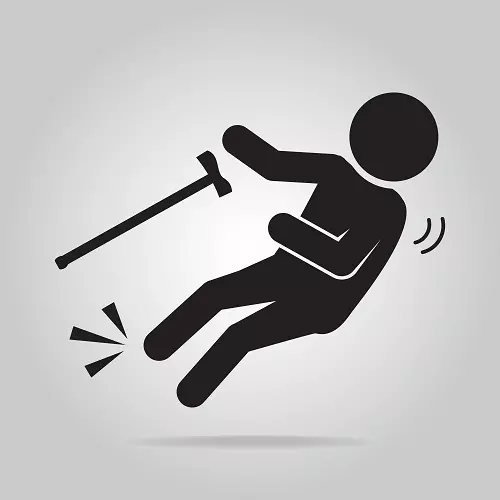
According to the ongoing survey on accidents of everyday life published in 2016, falls account for 80% of everyday accidents beyond the age of 65. Indeed, three quarters of death by falls of all ages occurred in people over 75 years old. Thus, the prevention and detection of falls are therefore essential.
Real public health problems, falls in the elderly have long been neglected. That’s why their prevention is based on the screening and treatment of responsible pathologies. In addition, the part on researching factors promoting the risk of falls is essential.
Indeed, the experience of a fall weakens the elderly person, even in the absence of traumatic consequences, and can sometimes constitute a mode of entry into an institution.
Falls of the ederly : a few landmarks
- Every year, 2 millions of 65+ years people fall. Among them, 12 000 die
- One in 2 people over the age of 80 is a victim
- Half of falls occur at home during daily activities
- Victims of outdoor falls tend to be men and younger than victims of indoor falls
- 40% of people hospitalized after a fall can no longer return to live at home
- The cost of falls among the elderly is estimated at 2 billion euros for communities
- 646,000 fatal falls occur each year worldwide, making it the second leading cause of unintentional injury death, after road accidents (WHO)
- Being immobilized on the ground for an hour means a 50% risk of death in the following 12 months
What factors contribute to falls?
The cost of falls in the elderly is estimated at 2 billion euros for communities. Therefore, several factors come into play and increase the risk of falling: personal factors (age, health and physical condition), behavioral factors (daily activities at risk) and environmental factors (non-adapted living space).
Falls usually occur during daily activities, whether at home or outside. Moreover, if one in two falls occurs at home, the most conducive place remains the bathroom, particularly the shower or bathtub. Then, still within the home, many obstacles can cause falls, such as stairs, rugs, wires strewn on the ground, or even poor lighting.
In addition, falls can also occur in a person suffering from vigilance disorders following excessive alcohol consumption or medication use. Also, patients with dementia fall more than those who are free from it. Of course, walking or balance disorders, poorly adapted footwear, and vision disorders are also the cause of falls in seniors.
Main cause of falls
The main causes of falls are thus the decrease in vision, hearing and balance disorders, musculoskeletal disorders, cognitive disorders (Alzheimer’s, Parkinson’s or other neurodegenerative diseases) or even unsuitable shoes…
The circumstances of falls
The circumstances of falls are varied. Indeed, some are due to the environment and others to the health status of the person themselves. However, most often, these falls occur when walking, doing household chores, gardening, or simply getting up from a chair. In addition, accidents can be facilitated by the loss of reflexes, muscle strength, sight, and sometimes balance.
Falls of the elderly are favored by several factors:
Personal factors
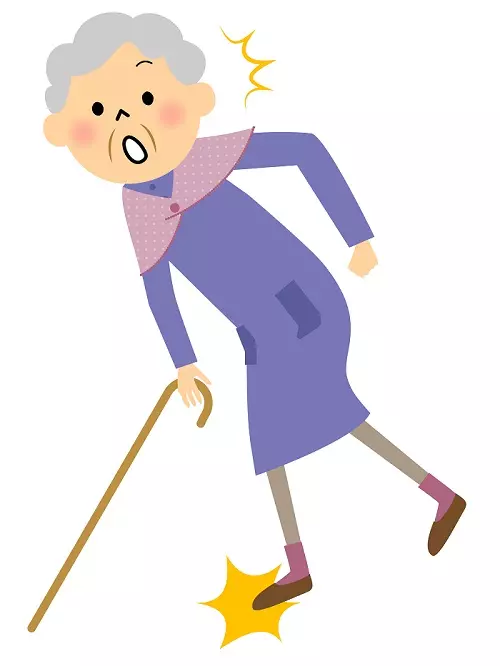
- Age: the risk of falls increases with age.
- Motor disorders: walking and balance disorders are common with age. Caused in part by muscle loss, these disorders often result in falls in the elderly. It is recommended to equip oneself with a walking aid, such as a cane or walker.
- Sensory capacities altered by aging: decreased vision (cataracts, presbyopia, age-related macular degeneration, decreased visual acuity), hearing disorders (reduced visual field), cognitive disorders.
- Orthostatic hypotension: drop in blood pressure when the person changes position too quickly.
- Medications likely to decrease vigilance, quality of vision… The simultaneous intake of more than 3 or 4 medications from 3 classes (cardiovascular, psychotropic, analgesics) also increases the risk of falling.
Comportemental and environmental factors
Falls can also be encouraged by daily activities at risk: intensive household activities, gardening… Moreover, the habitat itself, if not adapted to the needs of its occupant, can cause many accidents.
It may be necessary to adapt one’s home to one’s degree of loss of autonomy in order to limit risks and promote healthy and safe living in one’s home. Eliminate rugs and other slippery floor coverings, install support bars, ensure good lighting, remove obstacles on the ground or trailing electrical wires…
The risk factors for falls at home
The risk factors for falls at homerecognized as the most significant are:
- three or more falls in the previous year
- a fall with an injury in the previous year
- difficulty getting up alone from a chair
- balance disorders, gait disorders: osteoarthritis, history of stroke with sequelae, Parkinson’s disease
- orthostatic hypotension with a feeling of dizziness when changing position
- muscle weakness
- problems with the feet, for example, difficulty putting on shoes cognitive disorders as in the case of dementia the use of
- psychotropic medications
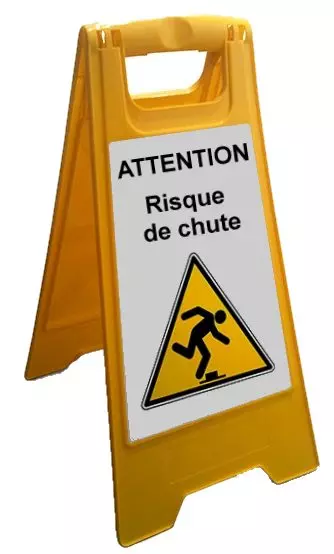
In November 2001, another cause was put forward by a British study. Researchers believe that seniors who suffer from recurrent and unexplained falls may actually be victims of an undiagnosed heart problem. This condition called “carotid sinus syndrome” (CSS) causes very low heart rhythms and blood pressure. If pressure is applied to the carotid artery, the heart can momentarily stop and cause fainting.
Thus, patients are more prone to fainting and falls. Since CSS also causes memory loss, the victim will not remember the loss of consciousness before the fall. For these people, the placement of a pacemaker would reduce this type of heart arrhythmia.
Consequences of falls of the ederly
The consequences of falls are numerous and of several kinds:
- Traumatic consequences: fractures, wounds, contusions, hematomas…
- Psychological: fear of falling again (post-fall syndrome) which leads to both postural maladjustment and a reduction in activities
- Social: reduction in activities which results in withdrawal and thus a gradual renunciation of one’s social life.
Traumatic consequences
Falls are a common reason for hospitalization and emergency room admission in the elderly.
Depending on the frailty of the elderly person and the circumstance of the fall, the consequences can be mild or severe with hospitalization and risk of complications related to forced immobilization.
Among the immediate consequences, fractures and hematomas should be feared. According to Inserm, more than 50,000 falls cause a fracture of the femoral neck in France, often leading to serious consequences and loss of independence.
We must also anticipate the consequences of a prolonged stay on the ground for a person who has fallen and is unable to get up. A prolonged stay on the ground can very quickly lead to dehydration, hypothermia, circulatory disorders, pressure sores, etc.
Post-operative complications of a fracture can also be severe in an elderly and frail person with risks of infections. Other consequences are also to be considered such as the occurrence of behavioral disorders or clinical manifestations related to the abrupt cessation of medication (especially those taken for sleep). In the aftermath of the fall, the elderly person can become fearful, lose their independence for fear of falling again and need home help, or even leave for an institution. The consequences of a fall are indeed the cause of an inability to stay at home and a break in social ties.
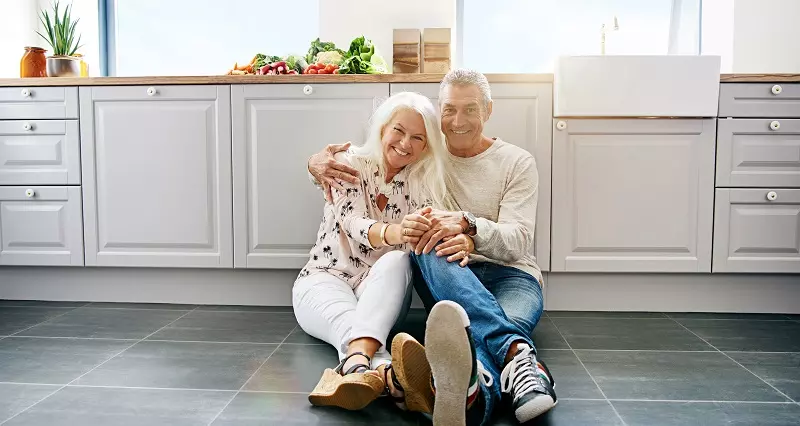
Psychological consequences on autonomy and social life
The consequences of falls are also psychological (fear of falling again, postural maladjustment…) but also social (reduction in activities, withdrawal…).
It has been shown that the longer the time spent on the ground after a fall, the more severe the physiological and psychological consequences. Hence the importance of being able to detect a fall as quickly as possible.
How can we concretely prevent falls in the elderly?
40% of people hospitalized after a fall can no longer return to live at home. But falling is not inevitable. It can be anticipated with rules of life and vigilance to limit risks.
Falls at home, risk areas
Falls often occur in “risky” places (such as the kitchen or bathroom), in hallways, stairs or even in the garden.
Prevention is the only way to avoid a fall. In addition to the classic home improvement devices, taking care of one’s health, diet or even regular physical activity are recommended.
Rearrange your home to reduce risks
How to rearrange your home to avoid falls and move around safely ?
- Do not leave objects on the floor, especially in passageways (corridor, entrance to a room, stairs)
- Secure the wires of the telephone, lights, television, computer so as not to trip over them
- Make sure the lighting is strong enough so that there are no shadow zones on the routes
- Do not rush if the telephone, doorbell, intercom or knocks at the door are heard
- Stabilize the supports (in the bedroom, bathroom), presence of help bars, and access to call devices; equip the stairs with a handrail
- Beware of slippery floors, carpet edges, and pets, which sometimes tend to get under your feet at the risk of making you fall
- Plan for adapted and safe showers.
- Preferably wear shoes with non-slip soles.
Adopt a healthy and balanced diet
Diet is the basis of a good lifestyle. If it is adapted, it can help to limit the risk of falls, prevent malnutrition and muscle wasting. Meals should be rich in calcium, proteins, carbohydrates, vitamins without forgetting to drink enough.
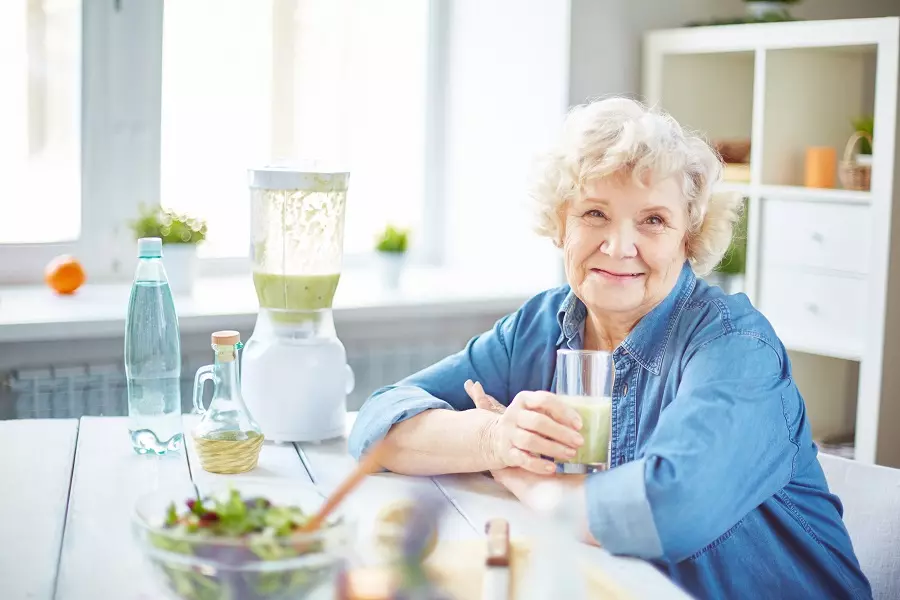
Many elderly people do not eat enough and this deficient nutrition increases feelings of weakness, dizziness, and therefore the risk of falls in the elderly.
Therefore, it is important to drink regularly and maintain sufficient food intake: 1,800 kcal for a woman and 2,000 kcal for a man.
In addition, alcohol should be consumed very moderately. Its absorption alters sensory and motor abilities and is likely to promote falls in the elderly.
Maintain physical activity at any age
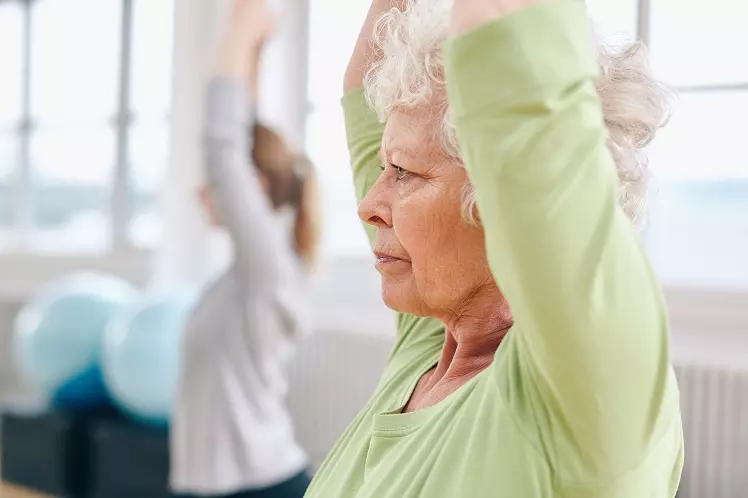
The practice of a sport or physical activity adapted to seniors and regular, such as walking or gentle gymnastics, helps to preserve reflexes and muscle mass, and therefore, to reduce the risk of falls in the elderly.
Maintaining physical activity also helps prevent osteoporosis, cardiovascular system diseases, obesity, diabetes, colon cancer, and mortality. Every activity counts and you can start at any age.
It is recommended to do at least 30 minutes of moderate intensity exercises per day (walking, swimming, hiking, cycling, stretching, climbing stairs…).
How to get up after a fall?
Learning to get up after a fall is essential, but it is before the fall that you should think about it…
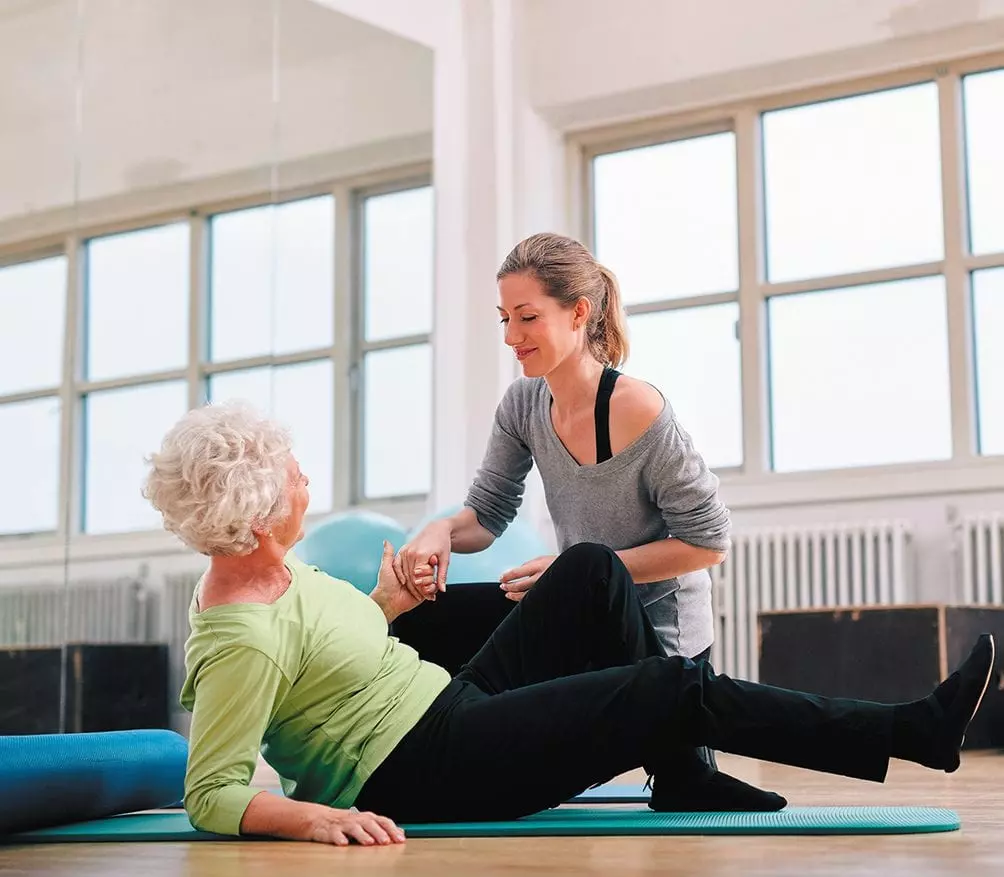
After a fall that has not caused serious injuries, staying on the ground until help arrives is not very pleasant. Yet this is what often happens to some elderly people, because they do not know how to get back up.
Learning to get up after a fall is essential. Do not hesitate to practice, preferably in the presence of another person by following these steps:
- Bend one leg to roll onto your side
- Turn over onto your stomach
- Put yourself in a “knight” position: one knee on the ground, the other leg stretched out
- Then on all fours
- Hoist yourself up by holding onto a chair or a banister
Finally, it may be wise to opt for a telecare solution, which allows you to alert emergency services or caregivers when needed, or if it is impossible to get up.
Elderly people at home: Detecting falls
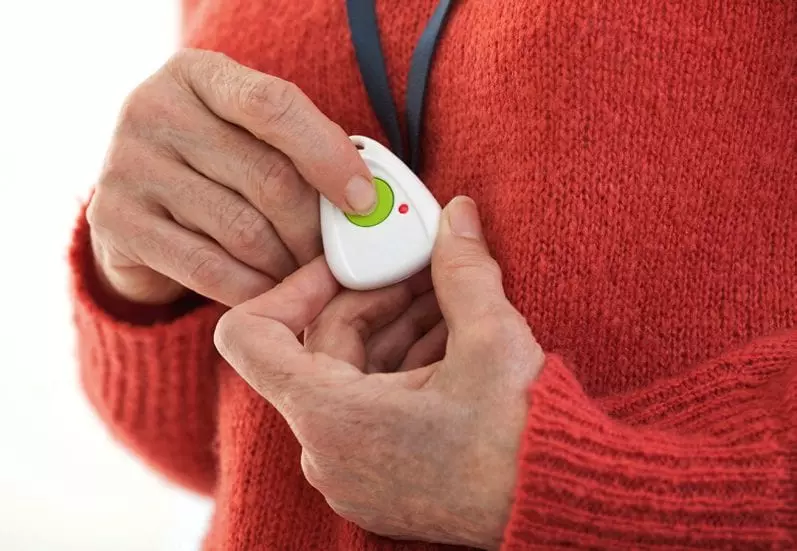
What are the means of detection and prevention of falls, how to get up and what to do to avoid another fall?
If the risks of falling again are multiplied by 20 after the first fall, the key is first to be able to identify it before it can be detected.
There are several types of falls
- Rapid loss of verticality associated with shock: known as a heavy fall
- When the person holds onto something (such as a piece of furniture): soft fall
- Syncopal fall: during loss of consciousness
However, it is difficult to accurately define all falls, especially since it is also important to identify false alarms.
The longer the time spent on the ground, the more serious the consequences of the fall. It is therefore crucial to be able to detect a fall to maintain the autonomy of elderly people.
Although it remains complex to accurately estimate, the overall economic cost related to the fall of elderly people is very significant, due to various health costs including hospitalization, physical and psychological follow-up, acceleration of dependence… The interest in working on fall detection (not to mention prevention) of the elderly is therefore major.
In this sense, several autonomy solutions have been developed and systems have been designed to detect falls and quickly alert in case of a problem.
Many researches are ongoing to develop devices that do not require an active alert from the victim of a fall (i.e. capable of alerting even if the person is unconscious).
These devices designed to detect a fall in an elderly person come in various types:
- Those that detect the fall itself (a rapid and sudden movement, or the shock wave on the ground)
- Devices that detect the prolonged horizontal position of the body after the fall
- Technologies that detect sudden and prolonged stops in daily activities or movements
- Those that track the person’s biological data (heart rate and blood pressure)
- And finally, products that combine these different techniques.
Published by the Editorial Staff on
